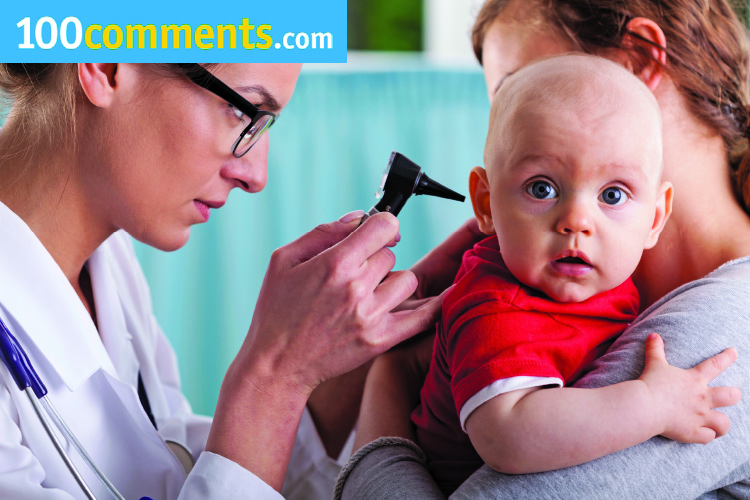If your little one seems to be crying for no reason, or appears to be in pain or discomfort, an ear infection may be the cause. Ear infections are very common in babies and it is quite easy to confuse all that crying and fussing for colic or other discomforts that babies usually have.
Table of Contents
Signs of an ear infection
It may be quite challenging to determine the cause of a baby’s wailings if nothing seems to be wrong, so how can you tell if baby is having an infection?
- Firstly, if your baby had a bout of cough or runny nose and suddenly develops a fever three to five days later, an ear infection is quite likely to follow. Check to see if your little one is pulling at his ear.
- Apart from that, your baby may also seem unwell and quieter than usual at times and when crying, it’ll be louder than usual. You may also find that your baby may not be responding when you call, due to temporary difficulties in hearing.
- Also, as sucking and swallowing can also hurt, baby may start to feed and then pull away from your breast or bottle because of the pain.
If you happen to see any of these signs in your baby, you can be almost certain that you’re dealing with an ear infection.
The cause
If your baby has a cold, it will cause the middle ear to become swollen. This swelling in the middle ear has the tendency to trap fluid inside the ear and this creates an ideal environment for bacteria and viruses to spread – warm and wet.
As a bacterial infection sets in, pus develops, placing pressure on your baby’s eardrum while causing it to bulge and become inflamed. Your baby may then get a fever – the body’s natural mechanism to fight the infection. This type of ear infection is called acute otitis media.
See a doctor if you think your baby has an ear infection. Many ear infections get better on their own, but your doctor may prescribe antibiotics. Your baby’s ear should start to improve in three or four days.
How can I comfort my baby?
To help speed up recovery, ensure your baby gets plenty of rest. If your little one has a fever of over 38.5 degrees Celsius, you can try a dose of infant fever medication to help reduce the fever and ease the pain and discomfort too. Always check the dosage information on medication bottles, or ask your doctor or pharmacist if you’re unsure about how much to give your baby.
Take a baby under six months old to the doctor on the first day of a fever.
If it is painful for your baby to eat or drink, offer smaller portions of food or drink more frequently to keep his or her energy up and prevent dehydration.
Preventing ear infection in babies and young children
There are some things you can do to help prevent your baby getting an ear infection:
- Breastfeed your baby often! Breast-milk is full of antibodies that can help baby fight infections.
- Don’t smoke or allow anyone else to smoke around your baby.
- Try not to leave your infant in a daycare till he or she is at least one year old. Daycare centres can expose a baby to other kids’ coughs and colds, which can lead to more ear infections.
- Be prompt about baby’s vaccinations. The Hib B and the Pneumococcal vaccines are especially important for preventing ear infections.
What to do if there’s no improvement
If your baby’s ear infection hasn’t improved after four days, take your baby back to the doctor for a closer check up. Your baby could have a more serious ear infection that may lead to problems such as hearing impairment if not addressed on time.
Pus oozing out of baby’s ear
Pus or bloody-yellowish fluid coming out of your baby’s ear means a small hole has developed in the eardrum. This should heal by itself within about two weeks, but call your doctor to get it checked out.
Short Middle Tube
A baby may also be susceptible to ear infections if the tube in the middle ear is short and horizontal while it’s still at a developing stage. As baby grows up, the tube will triple in length from 1.25cm to 3.8cm and become more vertical, reducing the chance of infections.
















